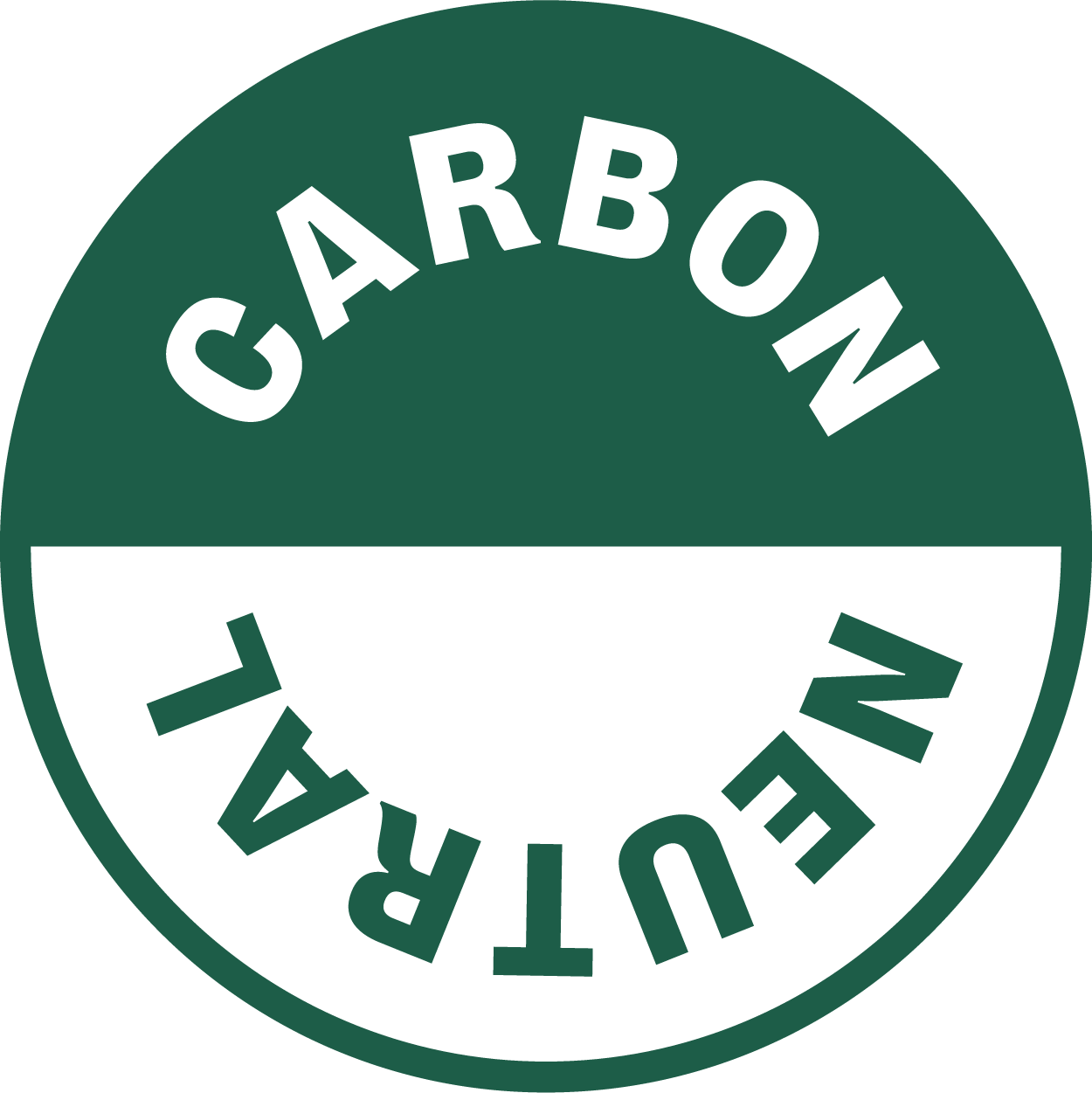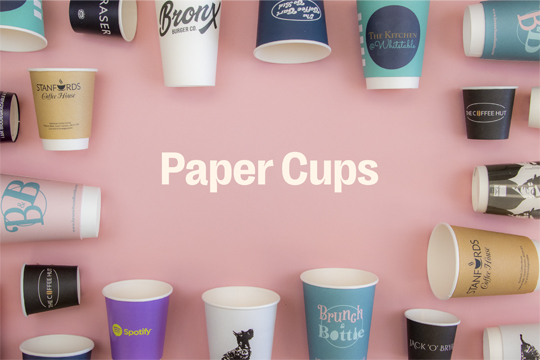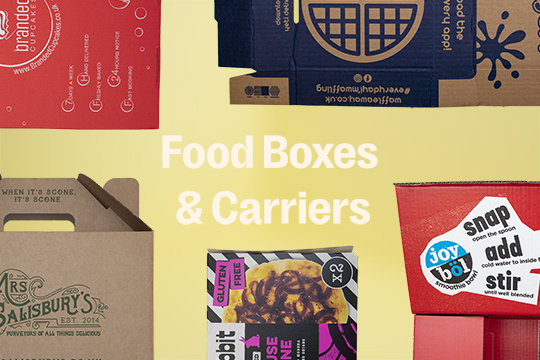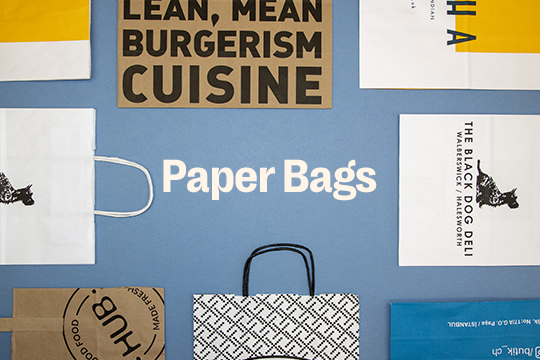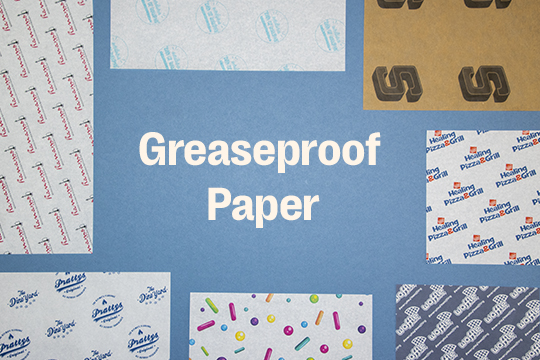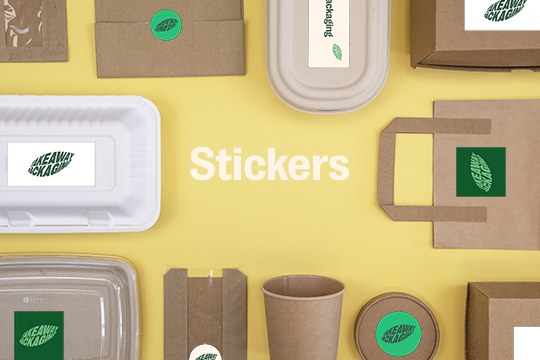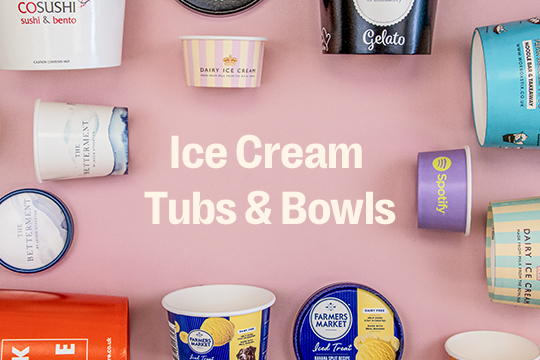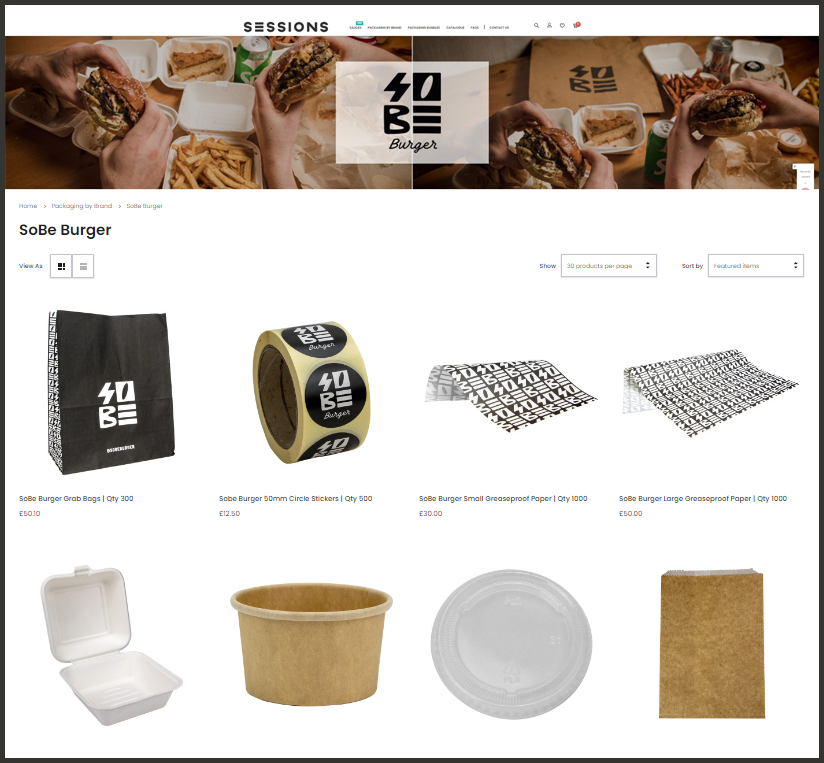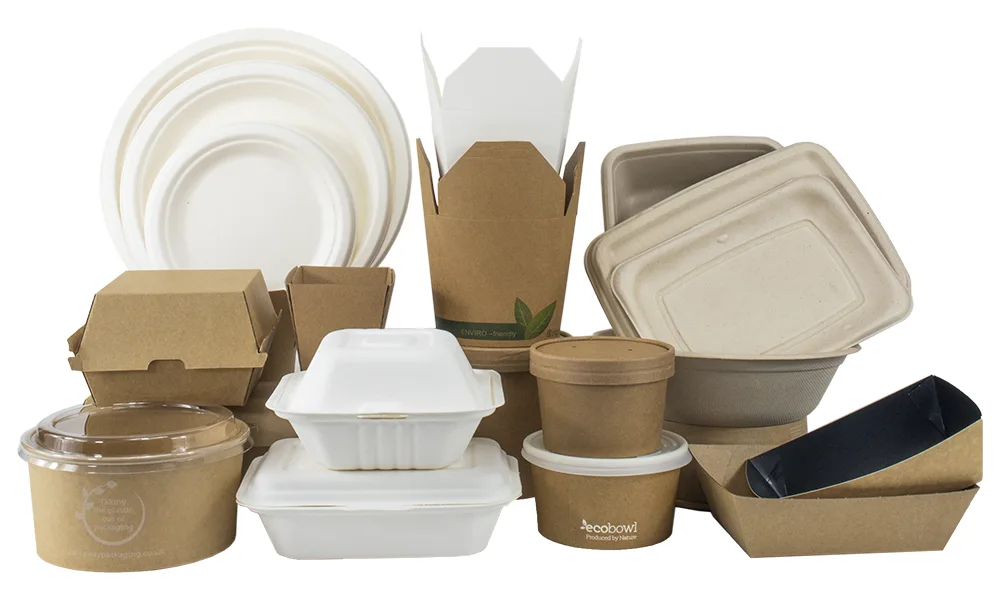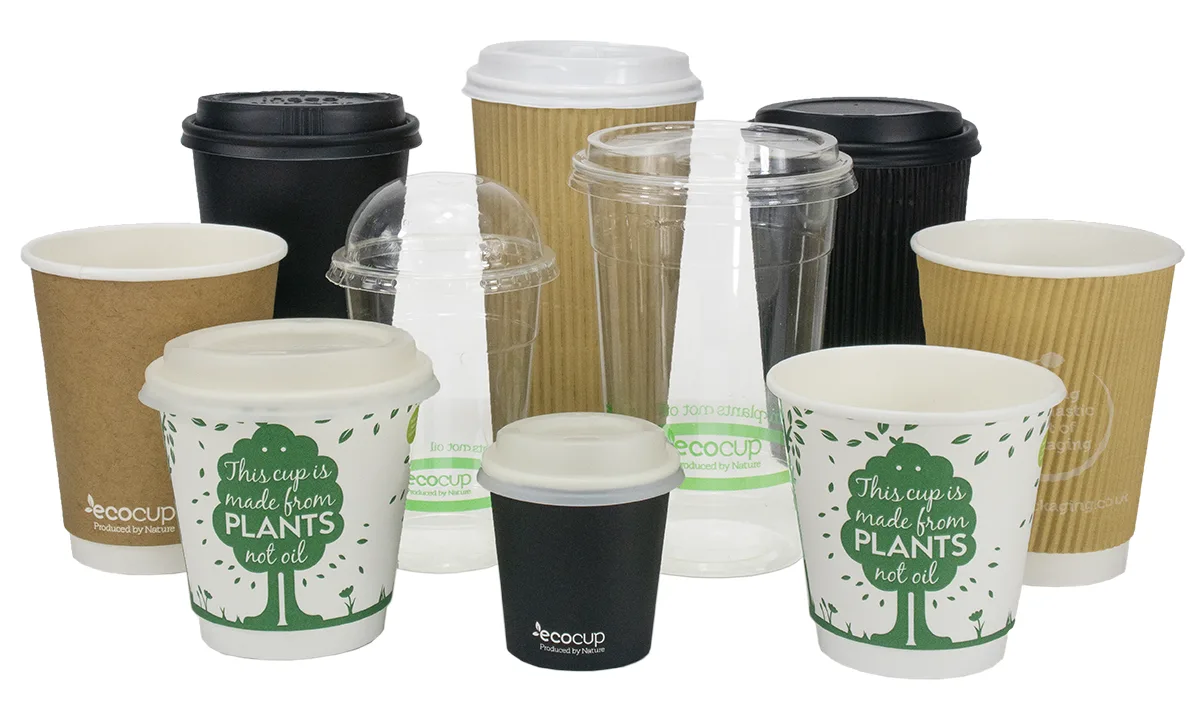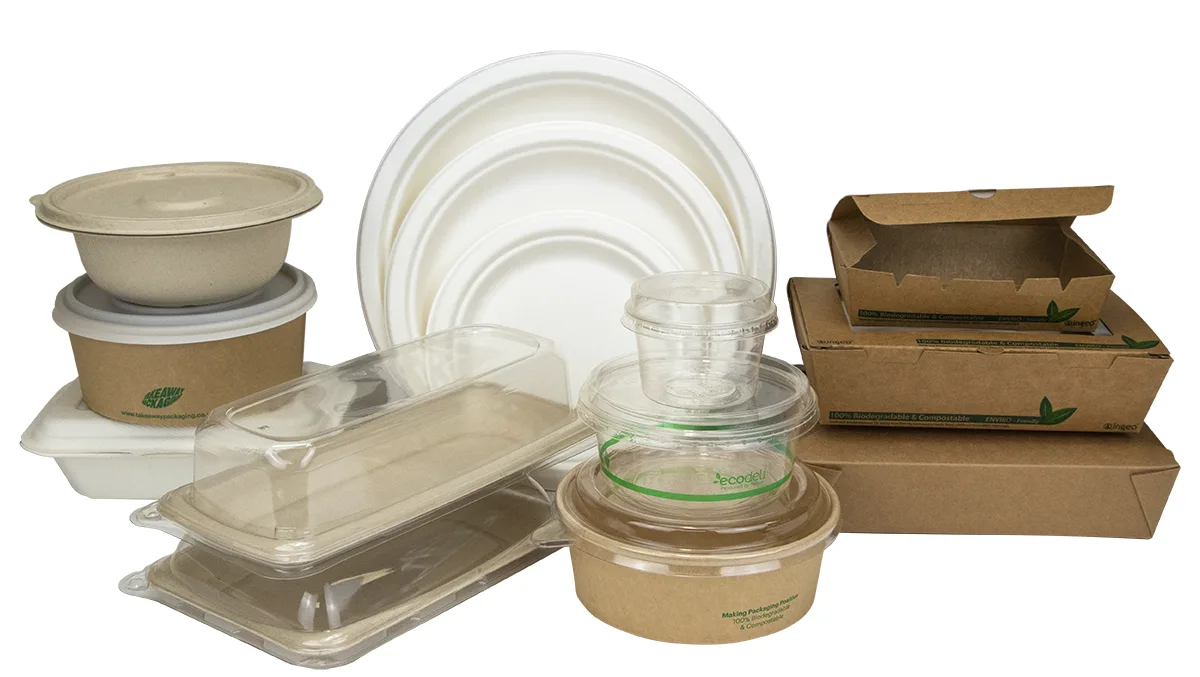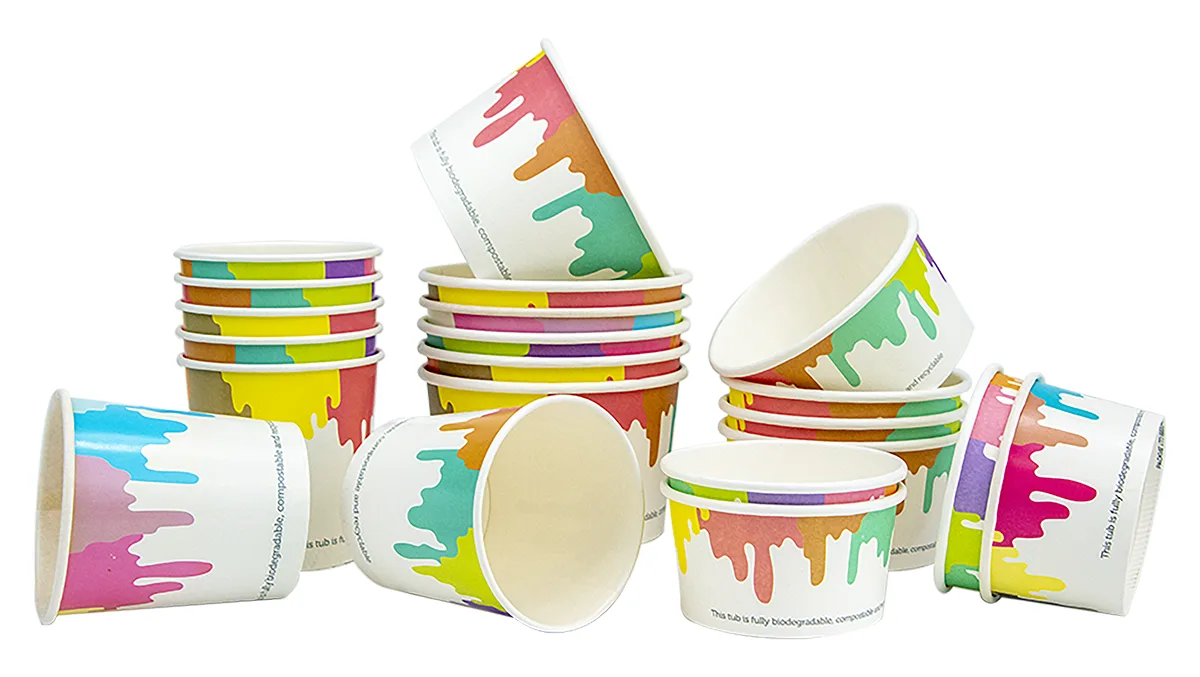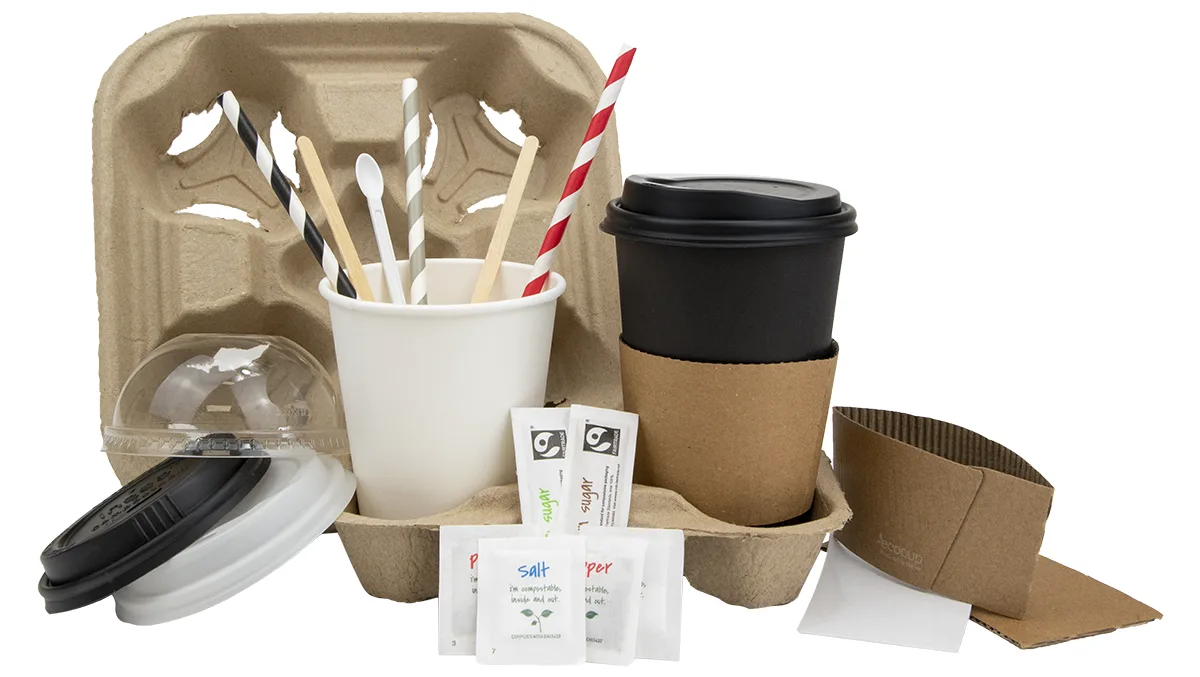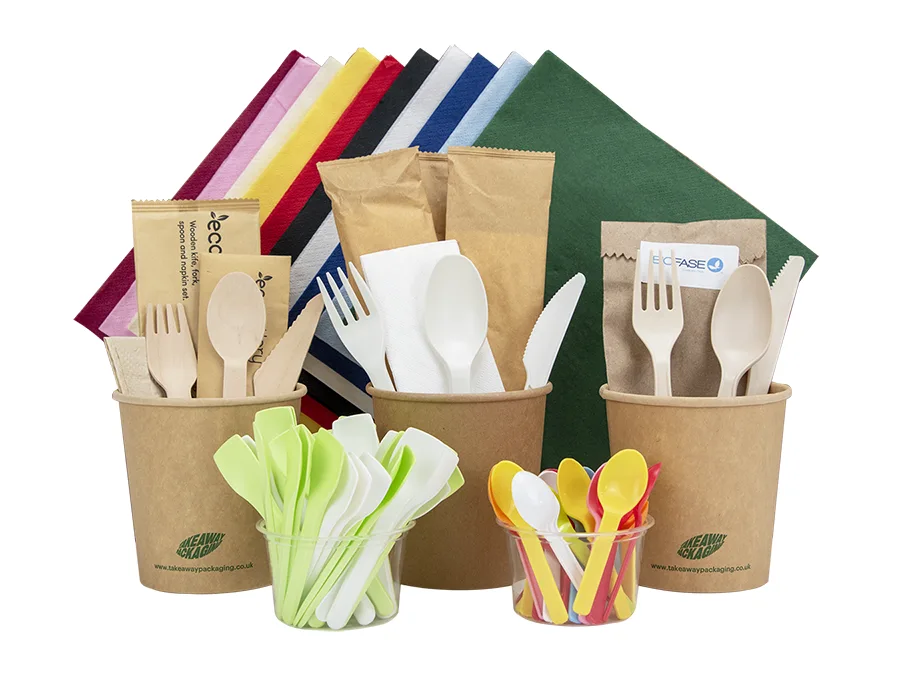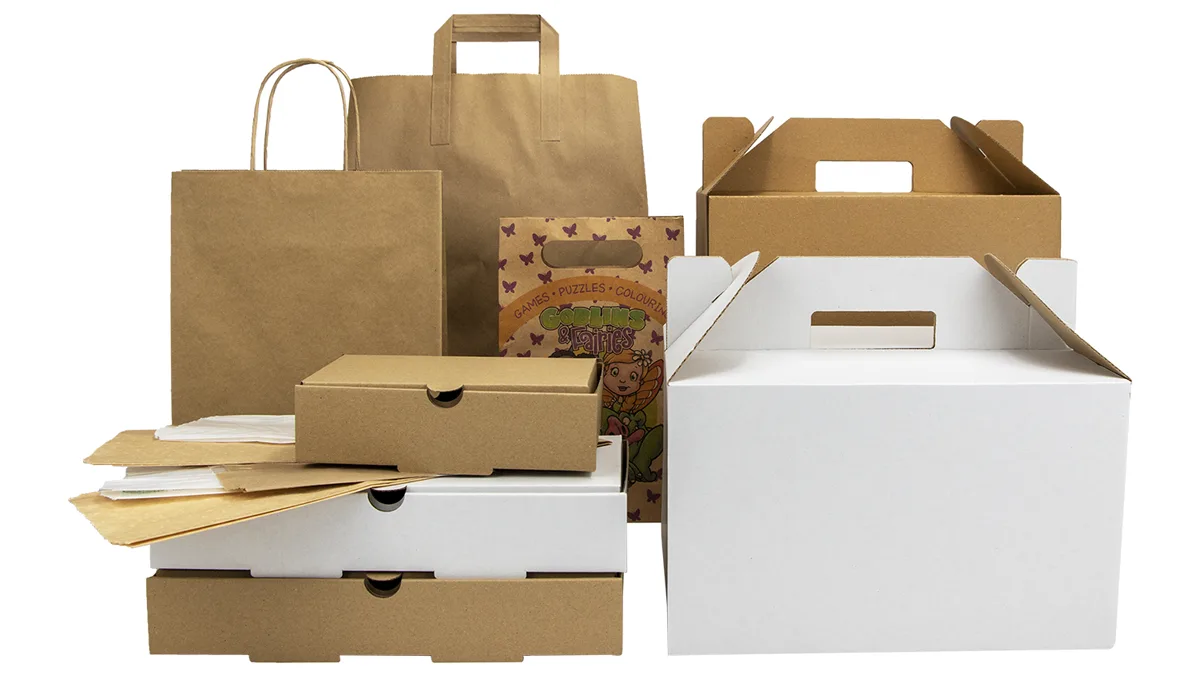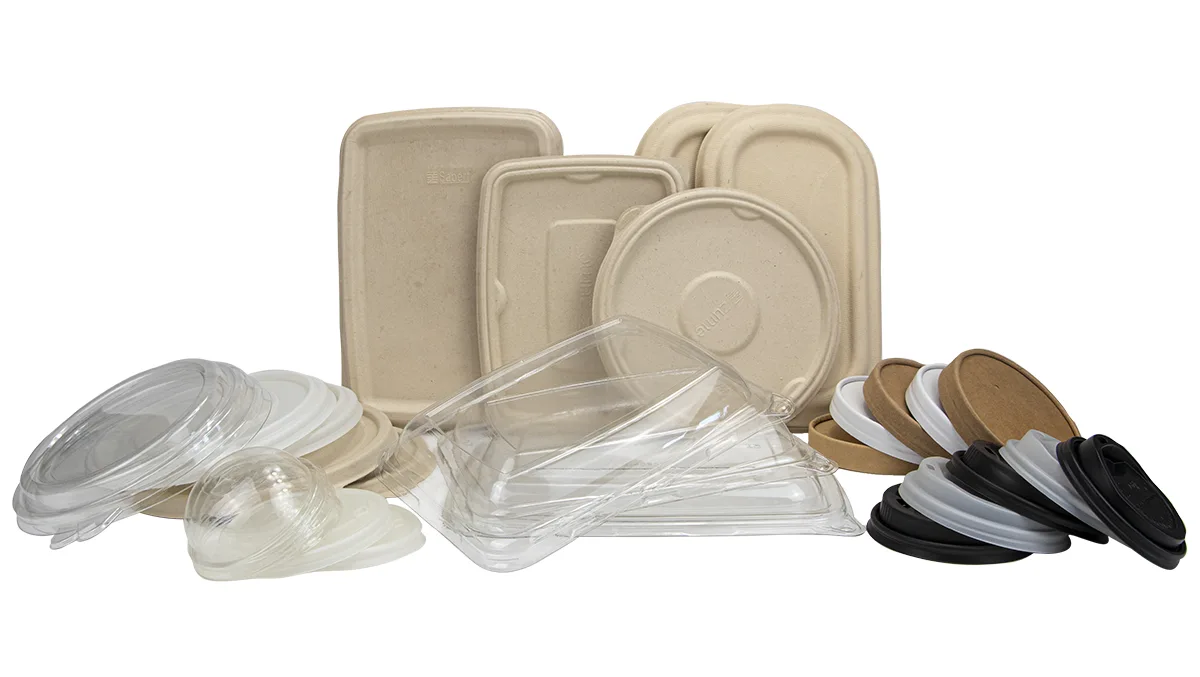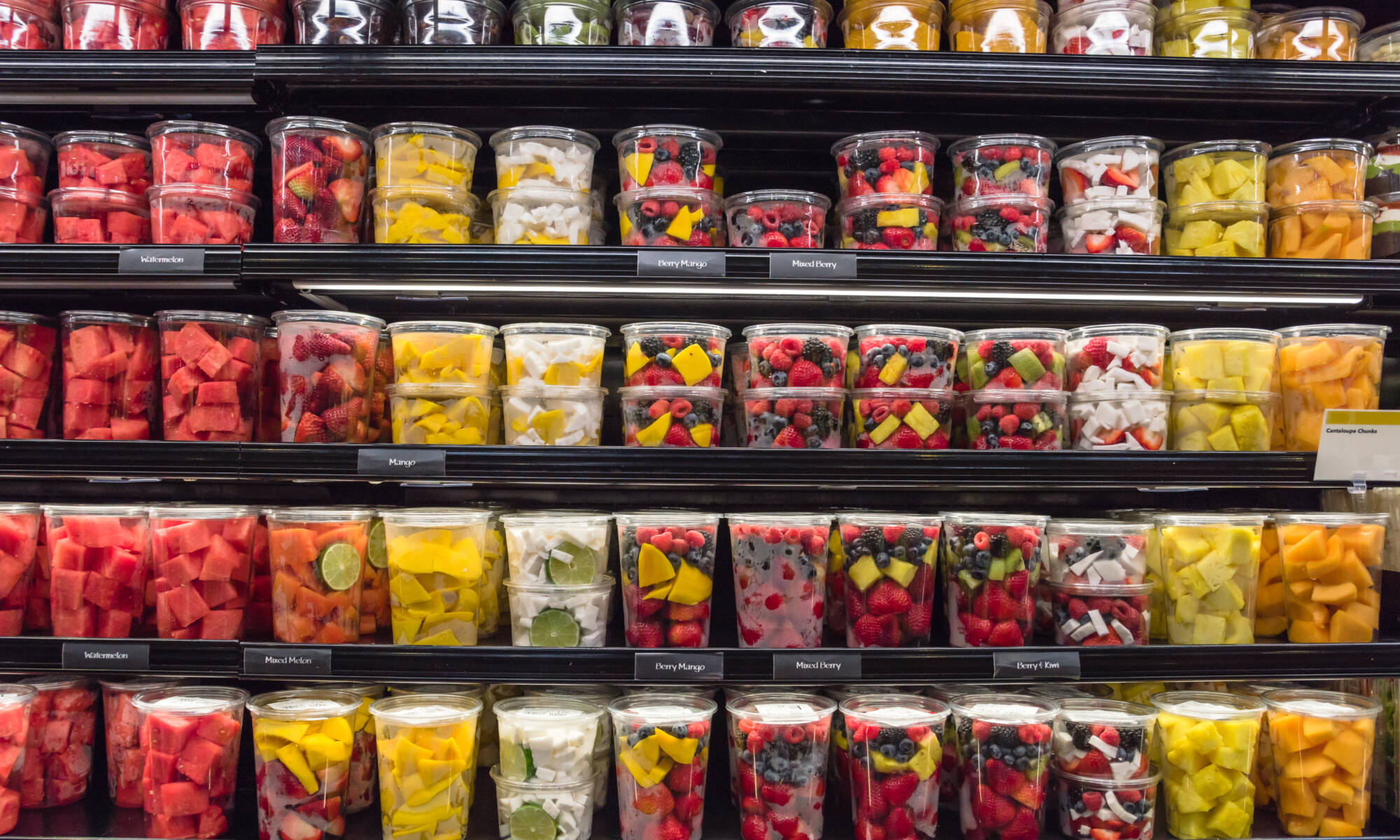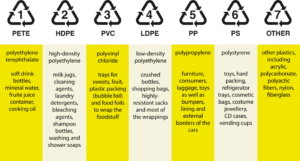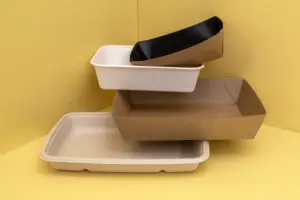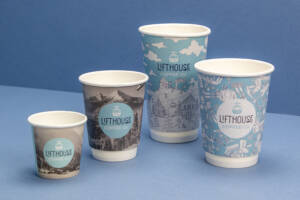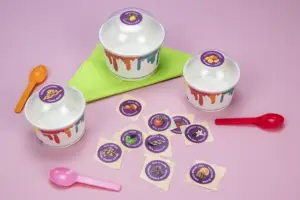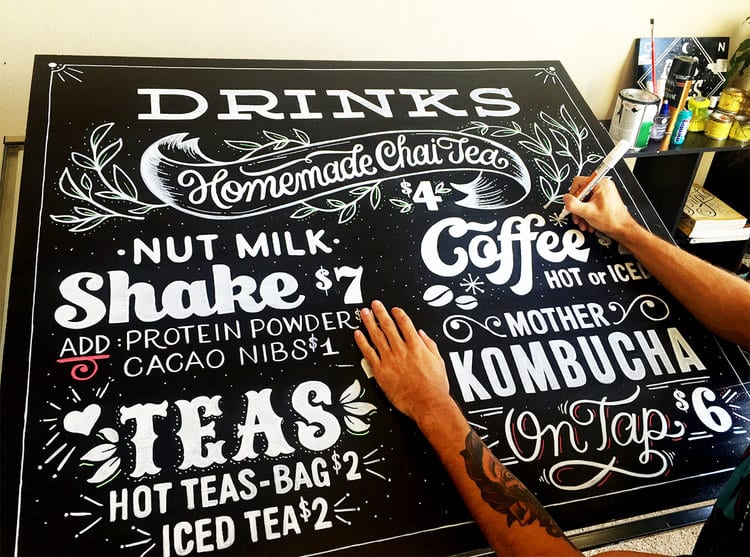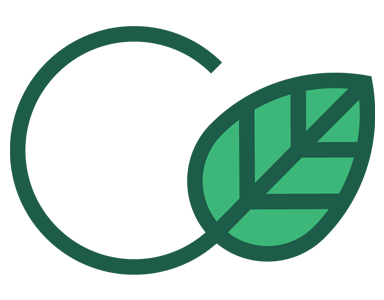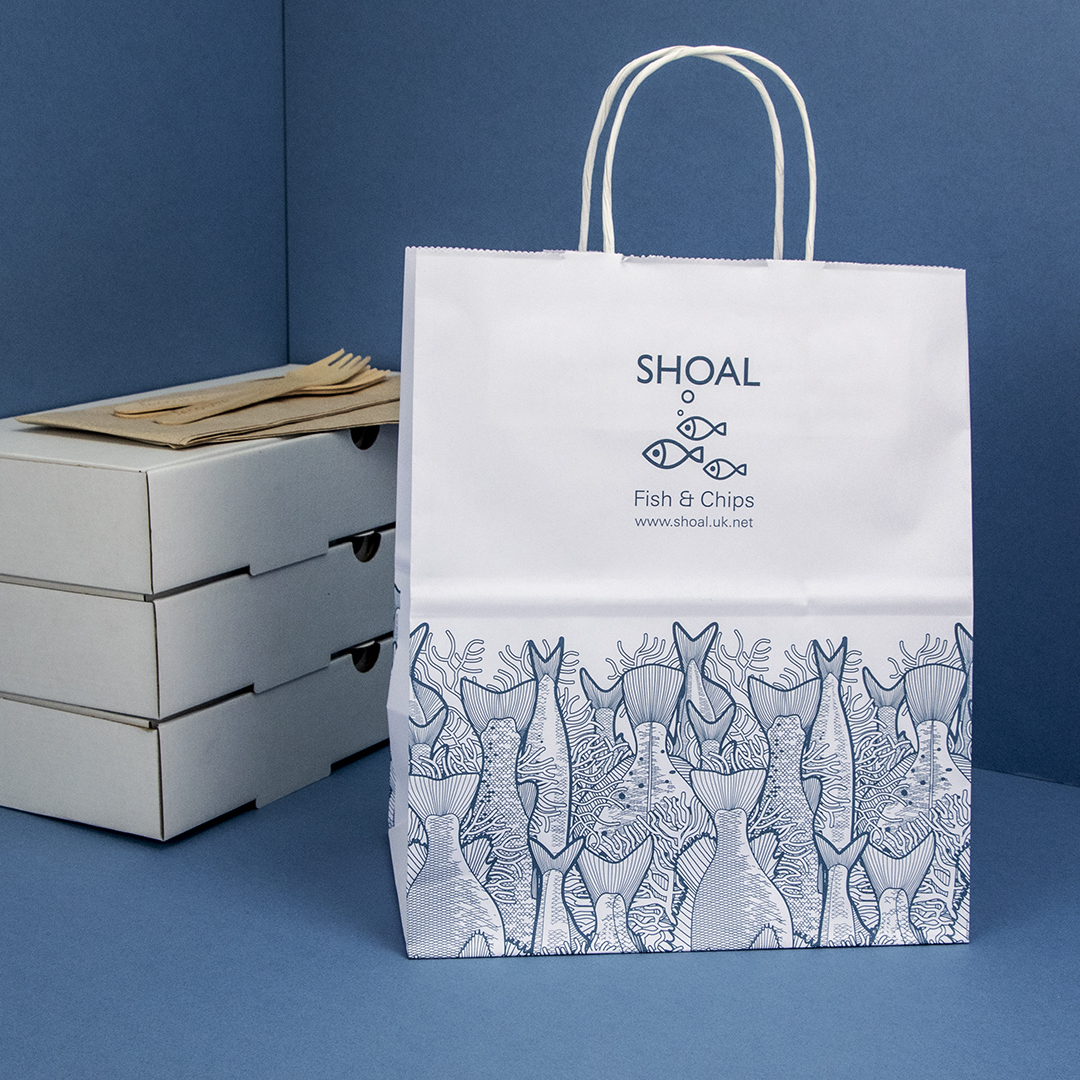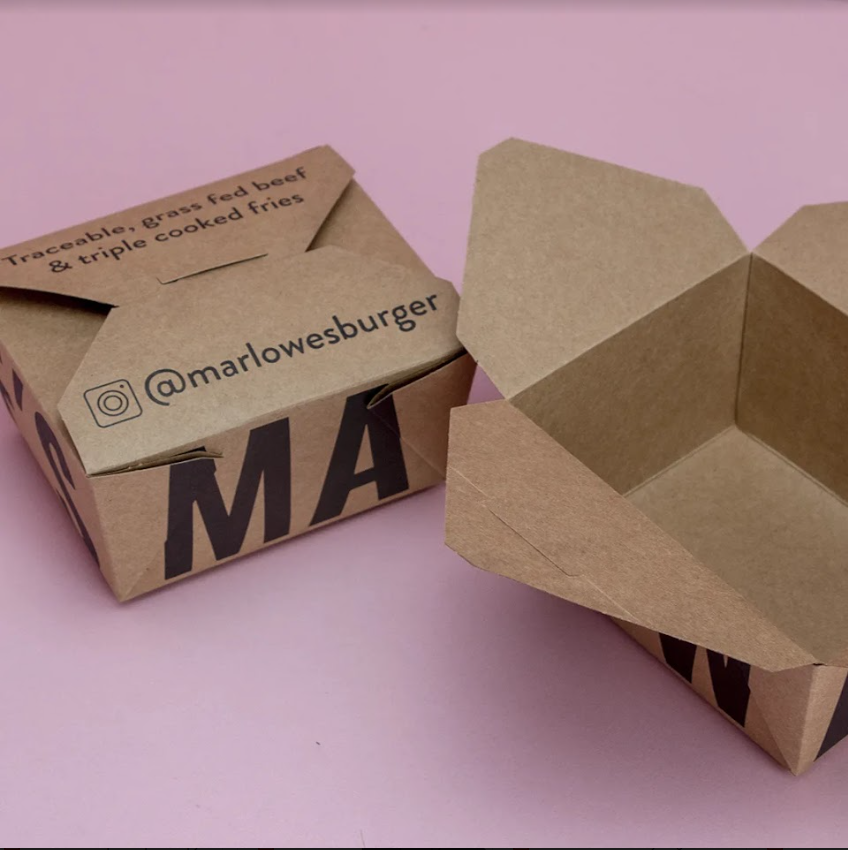Plastic has been used for food and drink packaging for decades. Pre-packed and freshly prepared takeaway food is often served in plastic packaging to preserve the contents, but is plastic packaging the best option for food?
Since the introduction of the Plastic Packaging Tax (PPT) — affecting all packaging that doesn’t contain at least 30% materials — food service businesses have been forced to rethink their packaging strategies to avoid the rising cost of plastic packaging.
While the tax provides a clear incentive for manufacturers and importers to use more recycled plastic, it’s raising the price of plastic packaging for businesses.
With plenty of alternatives available, let’s find out if your business could save money with eco-friendly food packaging instead.
Related: Which Single-Use Food Packaging Items Are Banned in the UK?
Which Types of Plastic Are Used for Food Packaging?
Several different kinds of plastic are used to package fresh and pre-packed food items. Each has a Resin Identification Code (RIC) that identifies the type of plastic resin the packaging is made from:
1. Polyethylene Terephthalate (PET)
Typically used for drinks bottles, ready meal containers and produce trays, polyethylene terephthalate (PET, or PETE) is one of the most popular thermoplastics used for food and beverage packaging.
Recyclable? Yes
2. High-Density Polyethylene (HDPE)
HDPE is a rigid plastic that has higher strength and durability than LDPE. It’s often used for packaging products that require greater protection, such as plastic milk bottles and washing detergent.
Recyclable? Yes
3. Polyvinyl Chloride (PVC)
PVC is a thermoplastic that has various applications, as it can be manufactured to be flexible or rigid. Most cling film is made from PVC, but it’s infrequently used for food packaging as PVC cannot be recycled at home.
Recyclable? No
4. Low-density polyethylene (LDPE)
LDPE is a lightweight and flexible plastic that’s most commonly used to package items like bread, frozen foods, and fresh produce. It provides a moisture barrier and helps preserve food on the shelves of shops and supermarkets.
Recyclable? Yes
5. Polypropylene (PP)
Polypropylene is a rigid plastic that’s commonly used for hot and cold food packaging, including yoghurt pots and takeaway containers. However, many kinds of plastic takeaway containers aren’t safe for use with hot food.
Recyclable? Yes
6. Polystyrene (PS)
Polystyrene has good insulation properties, making it a popular choice for fast food outlets for packaging items requiring temperature control. It’s most commonly clamshell containers used to serve fast food items, but it’s being banned from October 2023 due to the negative impact it has on the environment.
Recyclable? No
7. Other Plastics
Some other plastics can’t be categorised under any other resin identification codes, but they are uncommonly used with food products. If you come across packaging with this number, it probably isn’t recyclable.
Recyclable? No
What Are The Safest Plastics for Food and Beverages?
Health, safety and hygiene will always be a priority for businesses in the food service sector. Knowing which plastics to use with your food and drinks can keep your customers safe, but it all depends on how the packaging is used.
For example, customers need to know if it’s possible to reuse plastic takeaway containers safely and reheat last night’s takeaway. Still, much of this information isn’t made available at the point of sale.
Most of the plastics mentioned above are technically considered “food grade”, but the only true food-safe packaging is made from natural, biodegradable materials that won’t impact the health of your customers or harm the environment.
A recent study found that we ingest thousands of tiny plastic particles yearly. These take the form of microplastics that are invisible to the naked eye. Findings like these further indicate that we need alternatives to plastic packaging for our food and beverages to avoid causing your customers harm, even if we had the best intentions with your packaging selection.
Bioplastics and Their Use in Takeaway Packaging
The safest plastics for food and drinks are bioplastics. Unlike non-biodegradable plastics, bioplastics like polylactic acid (PLA) are derived from plants like the by-products of sugarcane harvesting. They are naturally biodegradable and don’t have any of the typical environmental drawbacks of traditional oil-based plastics.
As eco-friendly packaging experts, we supply bioplastic packaging for various applications:
Eco-Friendly Takeaway Boxes and Trays
PLA makes an effective, eco-friendly lining for takeaway boxes and trays. It can greatly improve moisture, oil and grease resistance where needed most. Not only does this improve recycling rates, but it also makes the packaging 100% biodegradable, which is a huge plus considering the PE-lined trays would need to be recycled or end up in landfill.
PLA can also be used to create transparent windows for your packaging when you want to show off your food items. Just check out our salad boxes and sandwich bags.
Compostable Coffee Cups
Lining coffee cups with PLA helps prevent leaks while retaining heat, keeping your customers’ warm beverages hot and fresh. You can create an awesome, plastic-free experience for your customers with biodegradable coffee cup lids. Once they’ve been used, PLA-lined cups can be composted domestically or commercially, while PE-lined coffee cups can easily be recycled. All are available in a range of sizes and styles.
Ice Cream Tubs, Soup Pots and Bowls
We’ve created a range of custom ice cream and soup packaging such as tubs, pots and bowls lined with PLA to increase moisture resistance, allowing you to serve hot and cold food items without worrying about leaving your customers in a sticky mess. Pair these with our biodegradable cutlery and napkins (also made from bioplastics) for a totally green takeaway experience.
Interest in branded packaging? We can custom print your boxes, bags, cups and containers! Get a FREE quote in just 48 hours.
Is Plastic Packaging Bad for The Environment?
Plastic packaging is everywhere, but it comes with a high environmental cost. Plastic packaging is Europe’s largest single source of plastic waste, and food and beverage packaging accounts for 40% of the total.
As useful and as cost-effective as it may be, plastic packaging waste poses several challenges for businesses in food service when it comes to sustainability:
Plastic Packaging Isn’t Biodegradable
Plastic packaging can take centuries to decompose. This creates a huge amount of irremovable landfill waste that will be around long after the packaging has served its purpose. For this reason alone, biodegradable packaging makes much more sense if it’s intended for single-use.
Pollution and Plastic Waste
Plastic always finds a way into the natural environment, no matter how carefully it’s disposed of. Not only does this contribute to litter in city centres and microplastics on beaches, but it also creates a huge amount of pollution in manufacturing.
Bans on Single-Use Packaging
As of October 2023, single-use plastic packaging products will be banned, including plastic-based plates, bowls, trays, containers, cutlery and more. Swapping out plastic packaging makes good business sense to avoid being caught out by the changes in legislation.
Understanding the environmental impact of plastic packaging is crucial for food service businesses to make informed choices about sustainable packaging alternatives.
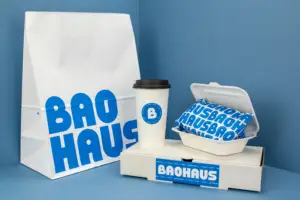 Featured: Completely plastic-free packaging for BAOHAUS
Featured: Completely plastic-free packaging for BAOHAUS
What Are the Alternatives to Plastic Packaging?
If you’re not keen on plastic food packaging, plenty of sustainable alternatives exist. Each has its advantages, but all can be used to help protect your customers and the planet:
Cardboard: Made with at least 80% recycled materials, our cardboard packaging is biodegradable, compostable and recyclable. Some products, like our food-grade pizza boxes, feature a greaseproof and oil-resistant Kraft paper lining — perfect for cheesy pizzas!
Paper: Also made from totally natural and sustainable resources, it makes the perfect choice for takeaway bags. While the use of plastic bags is in steep decline, paper bags make a perfect eco-friendly alternative for takeaways and deliveries.
Bioplastics: A much greener alternative to regular plastic, bioplastics are made from plant-based materials (PLA) that degrade naturally over time. Bioplastics are particularly useful for hot and cold drink containers, as they can be used as biodegradable coffee cup lids or to line the inside of paper beverage containers.
Glass: While suitable for home use, glass isn’t a great option for takeaways for obvious reasons. It’s an excellent option for storing food in your fridge or cold drinks if your customers want to avoid using plastic at home or preserve last night’s takeaway food.
Bagasse: Made from the dry, fibrous pulp that’s produced after crushing sugarcane to extract its juices, Bagasse is fantastic for hot and cold food containers. It’s perfect for soups and oily dishes as the densely-compacted fibres are non-absorbent and will help your food stay fresh and delicious.
Discover Plastic-Free Packaging Alternatives with Us!
There are loads of alternatives to plastic packaging available. Each can help you improve your customers’ experience, hit sustainability goals and help protect the environment with each of your takeaways without compromising on quality or performance. If you’re interested in switching to more sustainable packaging, we’re here to help.
Visit our online shop to discover sustainable takeaway packaging for all kinds of food and drink products. We even have eco-friendly stickers for food packaging!

